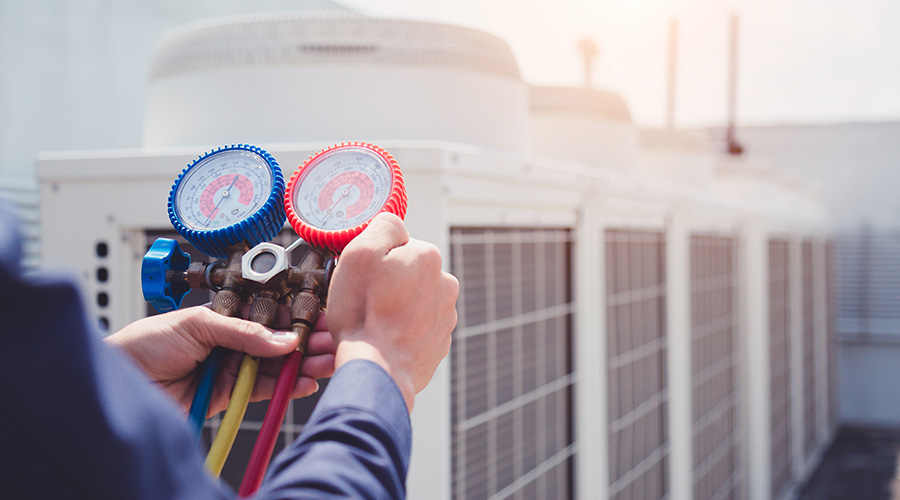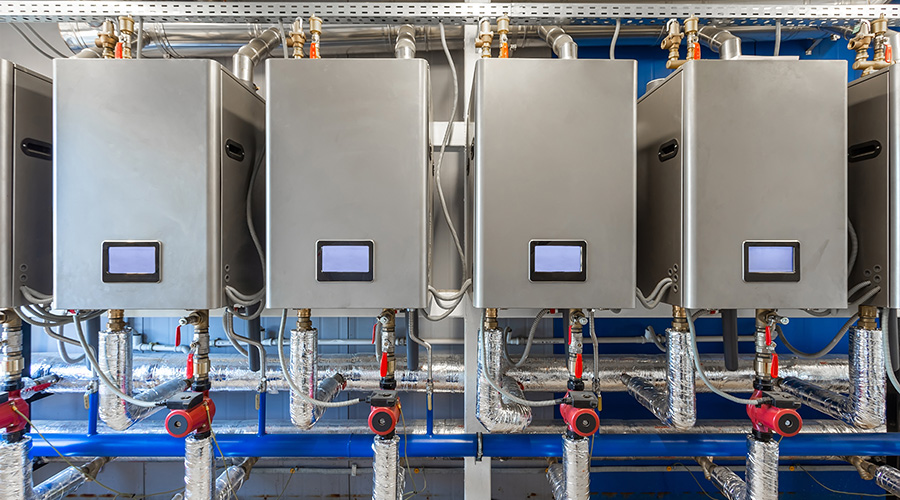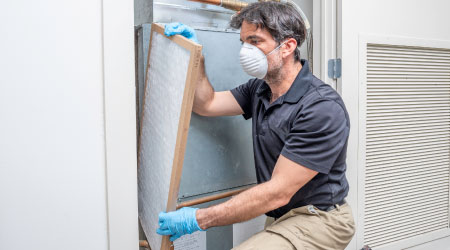Take Good Care of Airside Economizers to Realize Free Cooling Benefits
Airside economizers are simple, effective systems that significantly reduce cooling energy use and improve indoor air quality. They increase the energy efficiency of the HVAC system so much that most energy codes require them for most commercial applications. Yet these systems are often neglected and, over time, can degrade to the point that they don't operate correctly, resulting in energy waste. A little periodic maintenance can help keep them operating correctly.
Sometimes referred to as "free cooling," an airside economizer system consists of a set of outside and return air dampers that operate together to reduce the load on the mechanical cooling system. When outside air conditions are cool enough, the mechanical cooling can be shut off completely and the system can use outside air to cool the building, thus reducing the overall energy use of a facility. Indoor air quality is increased during airside economizer operation. That's because a greater amount of ventilation air is provided to the occupied spaces than during minimum outside air mode.
Airside economizers come in various different forms (e.g., temperature-based or enthalpy-based); they're typically more cost-effective for larger buildings with a greater percentage of internal zones; and they may not make much sense in some climates, especially hot, humid climates. These design considerations are important and have to be addressed, but design is only one side of the question of making airside economizers effective. If you already have an airside economizer system, how can you maintain it to keep energy costs down and indoor air quality high? The principles involved apply to small packaged HVAC systems as well as larger built-up air handling systems.
Airside economizers operate behind the scenes, meaning that most occupants and sometimes operators do not sense whether an economizer system is working correctly or not. If it's not working correctly, the main consequence is higher-than-necessary energy bills.
How do airside economizers typically fail? What are the aspects that contribute to sub-optimal operation, and what can building operators do to address these issues and maintain proper performance? There are a wide variety of methods of maintaining performance, from periodic testing to trend data analysis. Here are some of the key issues to consider when it comes to airside economizer performance and maintenance.
Most airside economizer damper systems are intended to operate in a manner similar to this:
When outside air conditions are very cold: The unit is in the heating mode. Mechanical cooling is off, economizer dampers are at minimum outside air position, and the heating coil operates to maintain supply air temperature setpoint.
When outside air conditions are cold: The unit is in economizer cooling mode. The heating coil is off, mechanical cooling is off, and economizer dampers modulate to maintain supply air temperature setpoint.
When outside air conditions are cool: The unit is in "integrated economizer" and mechanical cooling mode. Heating coil is off, economizer dampers are at 100 percent outside air position, and mechanical cooling operates to maintain supply air temperature reset.
When outside air conditions are hot: The unit is in mechanical cooling mode. The heating coil is off, economizer dampers are at minimum outside air position, and mechanical cooling operates to maintain supply air temperature setpoint.
This general description applies to most systems. The specific type of system, climate and control sequence will dictate how a system is intended to perform for actual installations.
— Dave Moser |
Related Topics:














